MXA’S 2015 KAWASAKI KX450F MOTOCROSS TEST: STILL THE KING?
Q: FIRST AND FOREMOST, IS THE 2015 KX450F BETTER THAN THE 2014 KX450F?
A: After four years of relative status quo on the KX450F front (save for the Kayaba PSF air fork on the 2013–’14 model), the 2015 model gets a heap of love. But does the love result in a better bike? Yes, with some reservations.
Q: WHAT DID KAWASAKI CHANGE ON THE 2015 ENGINE?
A: The KX450F engine hasn’t changed much over the last half a decade—and that is a good thing. The Kawasaki engineers played camshaft roulette in 2011, 2012 and 2013, but that was really a one-year change (2012) that they rectified in 2013.
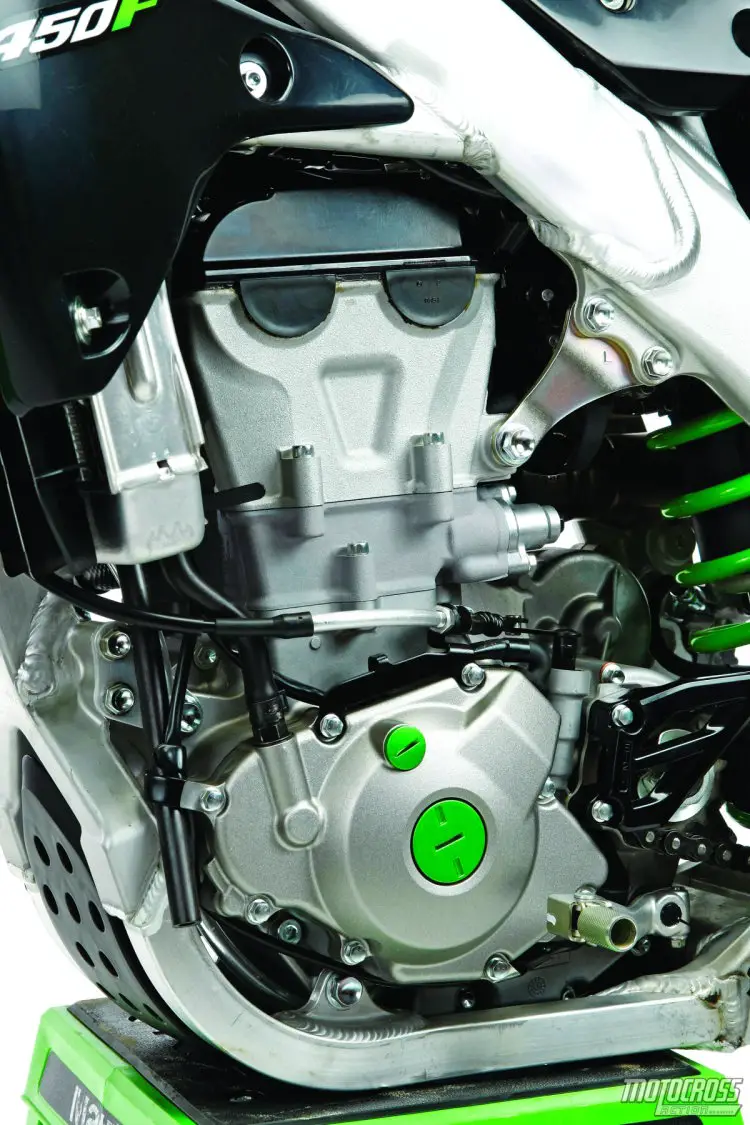
(1) Traction control. Although traction control has been illegal under AMA rules for the last three decades, the rules were conveniently changed just in time for the 2015 Kawasaki.
(2) Bridge-Box piston. The new piston features short skirts with reinforcing ribs to go along with a revised combustion dome shape. This change is more for durability than performance.
(3) Compression ratio. Compression was raised from 12.5:1 to 12.8:1 as part of the new structurally stronger Bridge-Box piston upgrade.
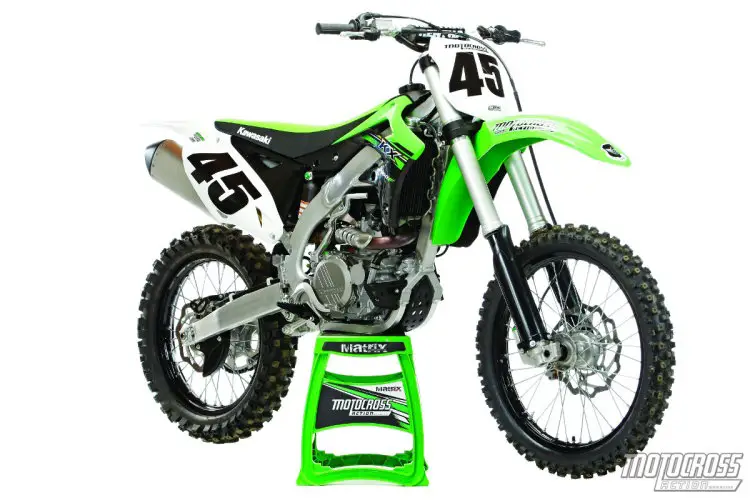
Q: IS THE 2015 ENGINE MORE POWERFUL THAN THE 2014 ENGINE?
A: We don’t think so. Most MXA test riders felt that the 2014 engine pulled harder off the bottom. The faster the test rider the more they preferred the 2014 powerband. The power differences are related to the ECU mapping and can be reprogrammed out. It should be noted that the 2015 KX450F’s powerband is still a thing of beauty. It is smooth down low, rolls on with authority and is an awesome race engine. It is however not the class leader in horsepower, it’s not second in horsepower and it’s not third in horsepower. The 2015 KX450F ranks fourth in peak horsepower compared to the other brands.

Q: DID WE HAVE ANY ENGINE ISSUES?
A: Yes. We had several qualms about the KX450F engine—some new and some old.
(1) Mystery ignition. We had some pinging and the occasional mystery sign-off, where the engine would quit by itself momentarily. Kawasaki had no answer to our question about our issues. But after it happened more than once, we were a little spooked.
(2) Clutch. The stock KX450F clutch pack is marginal. If you are a clutch abuser, you will eat this clutch in short order.
(3) Plug-on maps. Because of the detonation problem, we tried to switch from the stock green map coupler to the mellow black coupler—and while it eliminated the ping, it also eliminated the power. The more aggressive white coupler, which we normally prefer to run, aggravated the pinging
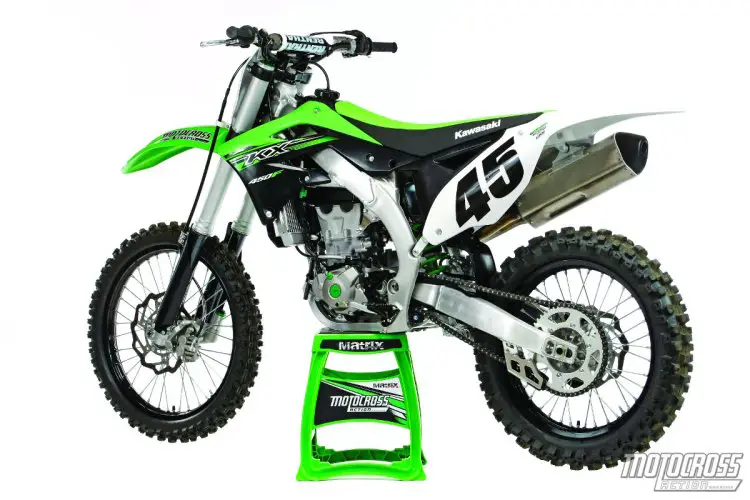
Q: WHAT’S REALLY SIGNIFICANT ABOUT THE 2015 KAWASAKI KX450F?
A: We aren’t pooh-poohing the engine mods, lighter subframe, traction control or non-cottered rear axle, but there are only two changes that make the 2015 Kawasaki KX450F different from the 2014—the Showa SFF-Air TAC forks and the 270mm front brake rotor.
Q: HOW GOOD ARE THE 2015 BRAKES?
A: The answer to this question is found in another question—how bad were the 2014 KX450F brakes?
In our 2014 KX450F test we wrote, “These old-school brakes won’t stop 239 pounds of runaway locomotive.”
In our 2013 KX450F test we wrote, “As a credo, the company that makes the most powerful engine should also make the most powerful brakes.”
In our 2012 KX450F test we wrote, “If this bike weighed in at the AMA minimum, maybe, just maybe, these spongy brakes would stop it—but with the 2012 KX450F’s ample horsepower and girth, these brakes are 98-pound weaklings.”
In our 2011 KX450F test we wrote, “A bike this fast and heavy needs the best brakes it can get—unfortunately, the Kawasaki brakes are not crisp, powerful and accurate.”
You get the idea. Thankfully, Kawasaki up-sized last year’s 250mm front brake rotor to 270mm for 2015. The added dose of leverage makes the KX450F brakes more than adequate for the job at hand. Good stuff, but are they as good as KTM’s 260mm Brembo brakes? No, but KTM has had years to fine-tune the piston size, caliper design and fluid dynamics of its brake system.
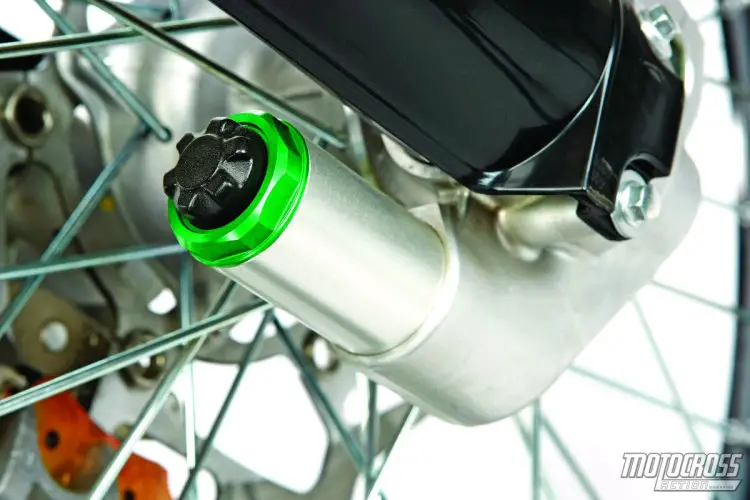
Q: ARE THE SHOWA SFF-AIR TAC FORKS AS GOOD AS THEY SAY?
A: No, they aren’t. These are the most complicated and difficult-to-tune forks ever made. Between their three different air pressures, 20 different compression and rebound settings and four different oil-height adjustments, a rider has 420,000 tuning combinations to work with. And once setup, they are good, but not great forks. If you want great forks, they come with springs and are found on the 2015 Yamaha YZ450F.
We tried as many settings as possible during our tests and never found the sweet spot that works for all riders. This is a very specific fork — which makes it hard to get help from other riders.. It’s important to note that the SFF-Air forks worked with the stock Kawasaki settings, but they don’t work very well. And, every logical modification that we made alleviated one complaint required us to make changes to lessen new problems. That doesn’t mean that we didn’t find a setting that we liked—just that our settings are far away from Showa’s recommended specs.
Q: HOW DO THE SHOWA SFF-AIR TAC FORKS WORK?
A: Think of the Showa SFF-TAC forks as a submarine. Much like a submarine, the TAC (Triple Air Chamber) fork has three different air chambers.
(1) The inner chamber, which would be where the sub crew lives and works, is the most important part of the sub (and TAC fork). Pressurized at 145 psi, the Showa’s inner chamber works as the main fork spring.
(2) The outer chamber surrounds the inner chamber. It is the fail-safe system both on a submarine and a Showa SFF-Air fork. It protects the inner chamber of the submarine from terminal damage, while on the Showa fork it works as a low-pressure chamber, 7.5 psi, that allows a fork seal to blow without leaking air pressure from the high-pressure inner chamber.
(3) Finally, a submarine has balance chambers that allow the submarine to surface or submerge by changing the pressure inside these tanks. On the Showa SFF air fork, the balance chamber, located on the lower right fork leg, provides air pressure that works in the opposite direction of the other two chambers. While the inner and outer chambers both push the fork downward, the balance chamber pushes the fork upward. What’s the point? Changing the air pressure in the balance chamber, set at 135 psi stock, can make the fork rise or fall (think surface or submerge) by counterbalancing the pressure in the outer two chambers. It is the air equivalent of preload on a coil spring. The negative spring also keeps the SFF-Air forks from the common air fork problem of topping out—by pulling the fork up when the air pressure tries to push it down.
Q: HOW DO YOU TUNE THE SHOWA SFF-AIR TAC FORK?
A: The options are unlimited, but here are the big five tuning areas.
Inner chamber. The inner chamber is the actual fork spring. It has an air pressure range from 87 psi to 187 psi, with 145 being the stock setting. Much like last year’s Kayaba PSF air fork, increasing the air pressure stiffens the spring rate, while reducing it lowers it.
Outer chamber. The big plus of the SFF-Air’s outer chamber over the Kayaba PSF air fork is that it is the only air chamber that is sealed by a fork seal. And since this chamber only holds 7.5 psi, even if the right-side fork seals blow, the inner chamber will maintain the integrity of its air pressure. Thus, the SFF-Air fork can never go flat as a PSF fork can. The tuning potential of the outer chamber is minimal, given its minimal air pressure, but we use it to lessen bottoming late in the stroke.
Balance chamber. The balance chamber holds 131 psi in stock trim, but can be set as low as 76 psi or as high as 203 psi. Since the inner chamber and the balance chamber are diametrically opposed to each other in a pressure war, the ratio of the two chambers is almost as important as the amount of air pressure.
Clickers. As with all forks, the SFF-Air has compression and rebound clickers—both found on the left fork cap. The left leg contains all of the fork’s damping, while the right leg contains only air pressure, albeit divided into three chambers. Common sense says that once you have selected the proper air pressure for your weight and speed, the clickers would be your go-to tuning option.
Oil height. As a rule of thumb, raising or lowering the oil height in either fork tube will change the pressure rate of the air spring, with lower oil heights producing a softer fork and higher oil heights delivering a stiffer feel with more resistance to bottoming. This is still true on a SFF-Air TAC fork, but there are four different oil-height possibilities. The left leg’s oil height is 340cc. On the right fork leg, the inner chamber’s oil height is 100cc, the outer chamber’s oil height is 300cc, and the balance chamber’s oil height is 10cc.
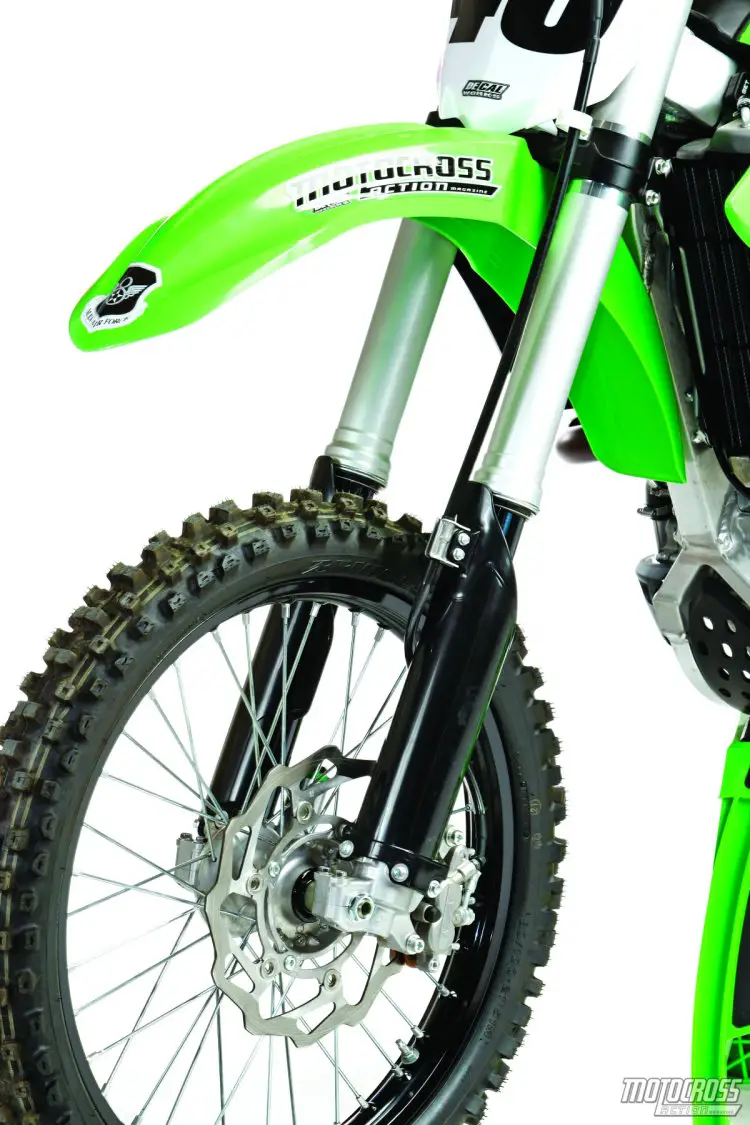
Q: WHAT IS THE BEST AND WORST THING ABOUT THE NEW SHOWA SFF-AIR TAC FORKS?
A: The best thing about the SFF-Air fork is that it is infinitely adjustable. The worst thing about the SFF-Air fork is that it is infinitely adjustable.
We got lost all the time when trying to fix the forks. Even with a firm understanding of how all the pieces of the puzzle went together, they often defied logic. An obvious change, one that we thought was a natural progression, would not work the way we wanted it to. Or, perhaps, it did work the way we wanted it to on that one chamber, but ruined its relationship with the other two chambers. Go to the end of this test to see our settings and read what we think about the front and rear suspension. Use our settings, not the stock settings, as a starting point and change the pressures in small increment to fine tune the feel for your weight, speed and track.
Q: HOW DOES THE 2015 KX450F HANDLE?
A: This is not a handler. It is a power platform. It is a base upon which Kawasaki mounts its powerful engine. It is an upright machine that is infinitely stable. It doesn’t have intuitive handling. It doesn’t do anything exceptionally well. It just holds the engine so that you can twist the throttle. Once you understand that and use it accordingly, you’ll get along fine with it.
Q: WHAT DID WE HATE?
A: The hate list:
(1) Girth. Too big, too tall and too heavy.
(2) Sound. This bike makes an ear-piercing 120 decibels on the AMA two-meter-max test; however, it passes the Amateur-required SAE 94-decibel test.
(3) Rear brake pedal. Old-school racers who want to run their brake pedals low will have to hacksaw off some of the plunger’s threaded rod.
(4) Ignition. We had some issues. There were occasion when the engine would die momentarily while under power. Not a reassuring experience.
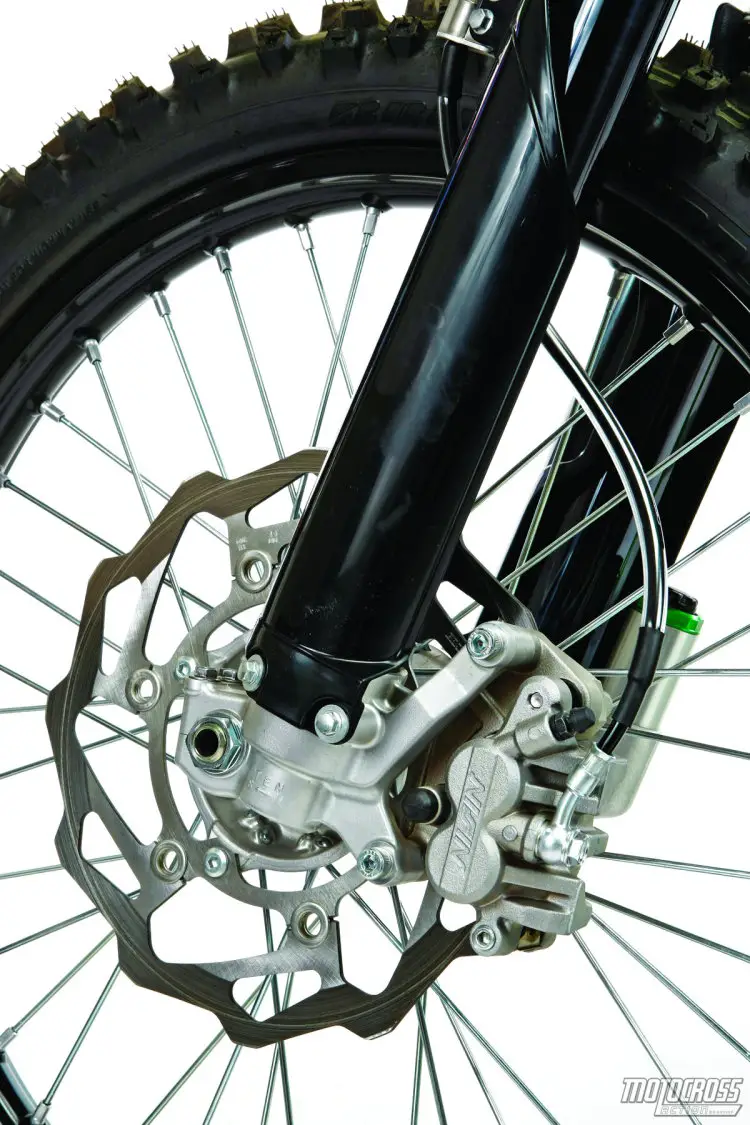
Q: WHAT DID WE LIKE?
A: The like list:
(1) Traction control. What a happy circumstance that the AMA changed its traction control rules in time for the 2015 KX450F to come with it—or was that vice versa? If it is working right, you will never notice it. Heck, if it’s not working at all you will never notice it.
(2) Launch Control. Use it or not. We run it on concrete and hard-pack starts but not on loam.
(3) Rear axle nut. Thank you, Kawasaki, for getting rid of that stupid cotter pin.
(4) SFF-Air forks. Hey, we may doubt the wisdom of spec’ing them, but they are 2 pounds lighter.
(5) Air pump. Kawasaki gives every KX450F buyer a free 0–300 psi digital air pump. You will wear it out.
Q: WHAT DO WE REALLY THINK?
A: We think that the suspension issues will be worked out with more testing and a broadening of the SFF knowledge base, but even then this fork will be a nightmare in the hands of a less-than-proficient owner. Other than that, everything else on the 2015 Kawasaki KX450F is as good or better than last year’s bike, which won the “2014 MXA 450 Shootout.” It, however, faces competition for the crown that is better suspended, faster, quicker handling and just downright spec’ed better.
MXA KAWASAKI KX450F SETUP SPECS
This is how we set up our 2015 Kawasaki KX450F for racing. We offer it as a guide to help you find your own sweet spot.
SHOWA SFF-AIR TAC FORK SETTINGS
Two years ago, Kawasaki and Honda both switched to Kayaba PSF air forks. They were workmanlike forks, but they had fork-seal issues, low-speed compression problems and weren’t the best forks ever made. Now, for 2015, Kawasaki has equipped the KX450F with Showa’s single-sided SFF-Air fork. Had we been the product manager at Kawasaki, we aren’t sure that we would have green-lighted these forks for a production bike. They are too hard to set up, too hard to live with and those problems dominated the experience.
For hardcore racing, we ran this setup on the 2015 Kawasaki KX450F (stock specs are in parentheses):
Inner spring rate: 160 psi (145 psi)
Outer spring rate: 10 psi (7.5 psi)
Balance spring rate: 170 psi (135 psi)
Oil height: 340cc (left leg), 100cc (inner chamber), 300cc (outer chamber), 10cc (balance chamber)
Compression: 9 clicks out (15 clicks out)
Rebound: 11 clicks out (13 clicks out)
Fork-leg height: 5mm up
Notes: These forks are hard to figure out. The high air pressures are hard to ensure with the supplied air pump. Our pressures varied as much as 7 psi. We hated the recommended fork settings for everything except the outer chamber, where they didn’t make much of a difference.
SHOWA SHOCK SETTINGS
The shock was a surprise. It worked well from day one, and although we went out on several settings and ran the race sag at a relatively low 104mm, we liked the improvements to the rear suspension.
We recommend this shock setup on the 2015 Kawasaki KX450F (stock specs are in parentheses):
Spring rate: 5.5 kg/mm
Hi-compression: 2-1/2 turns out (2 turns out)
Lo-compression: 9 clicks out (5 clicks out)
Rebound: 11 clicks out (15 clicks out)
Race sag: 104mm
Notes: The shock does not blow through as easily as last year, which is a big plus. But, it does seem to have a weird shelf that hangs the shock up midway through the stroke.


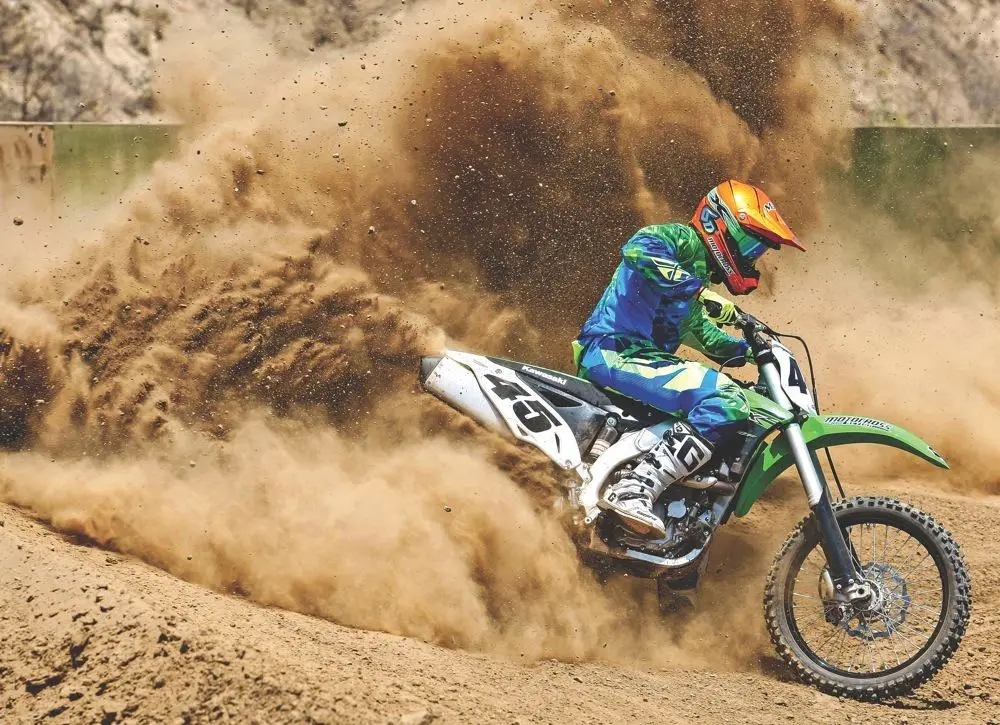

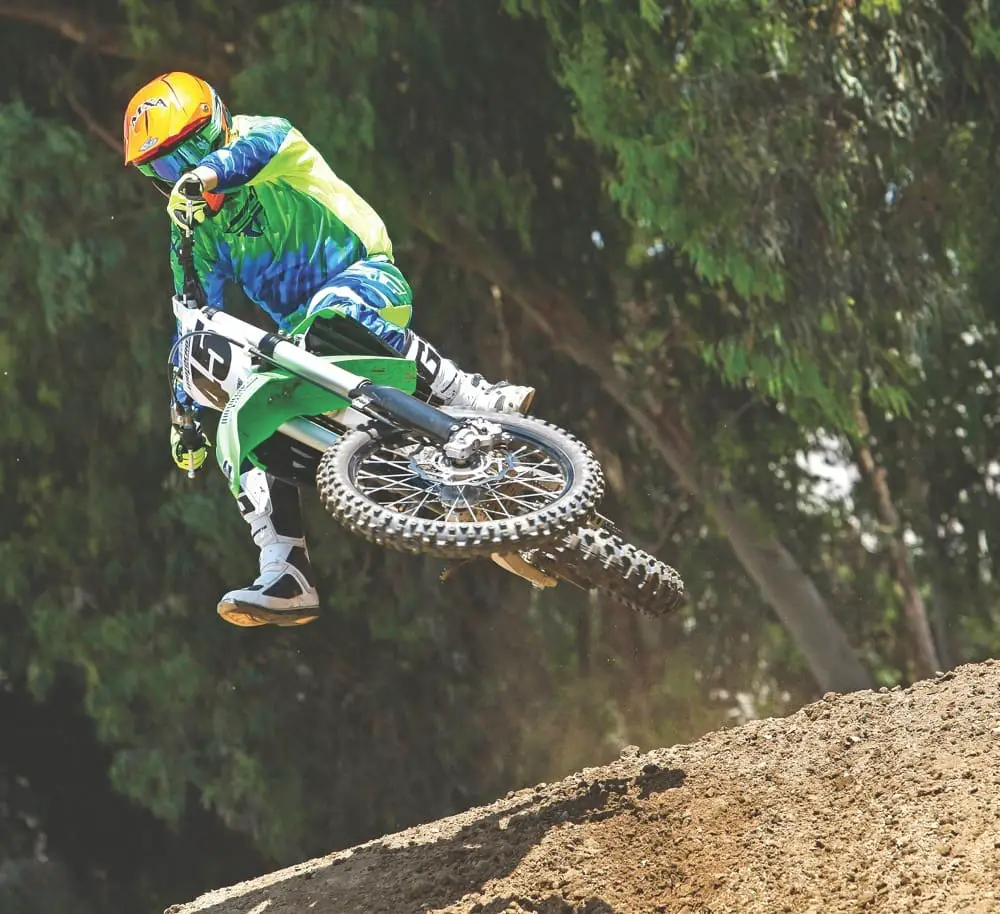

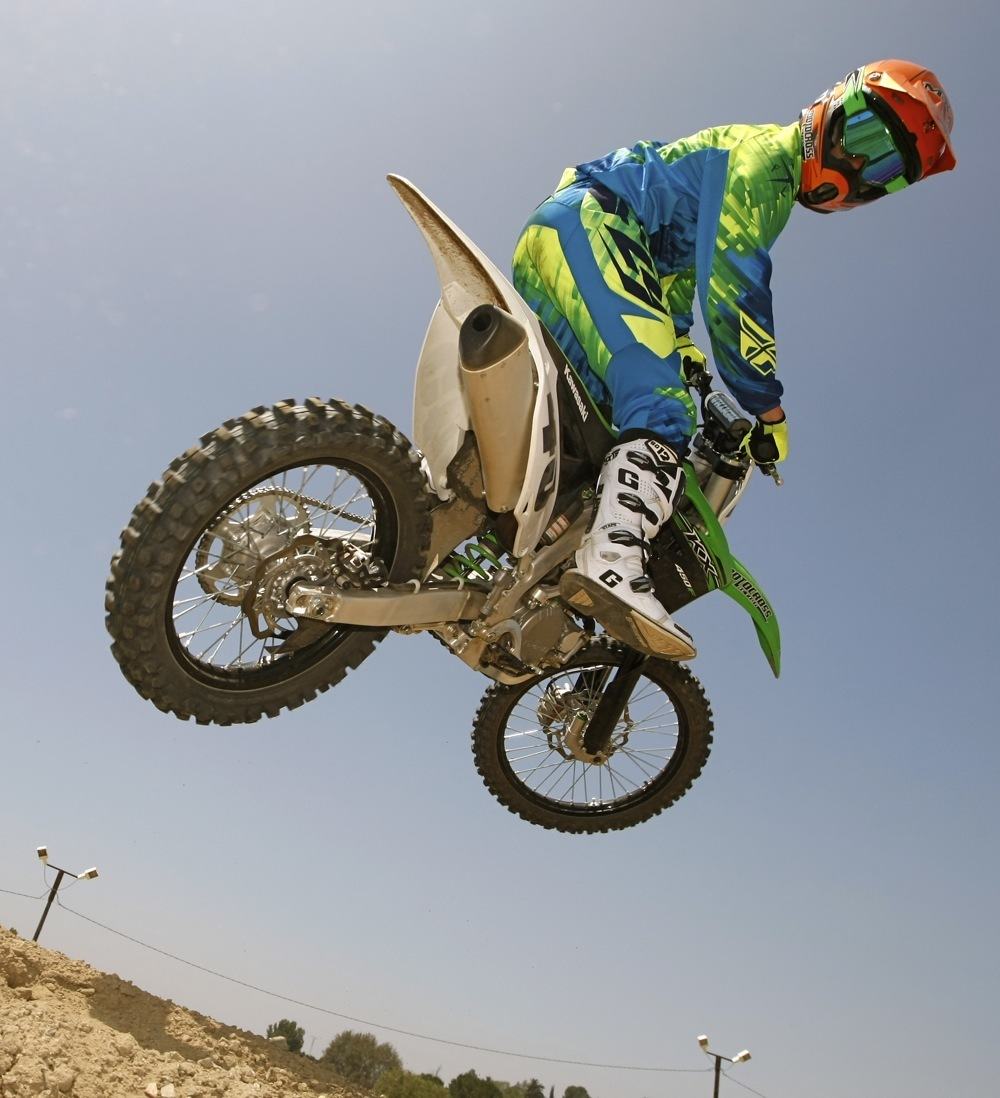



Comments are closed.